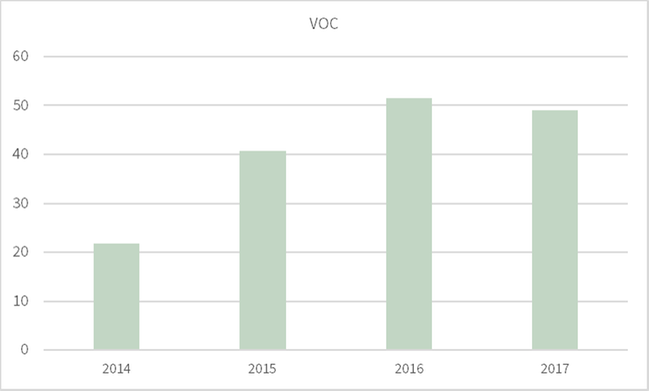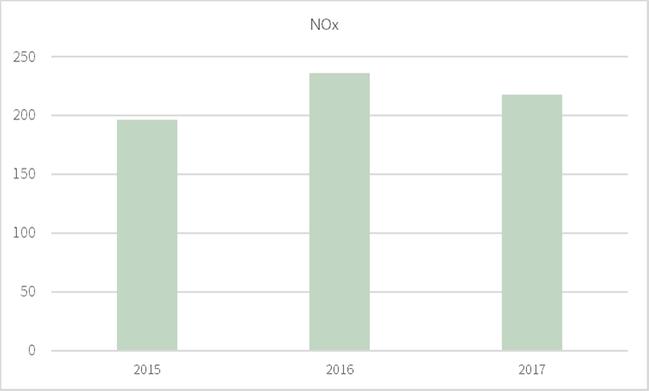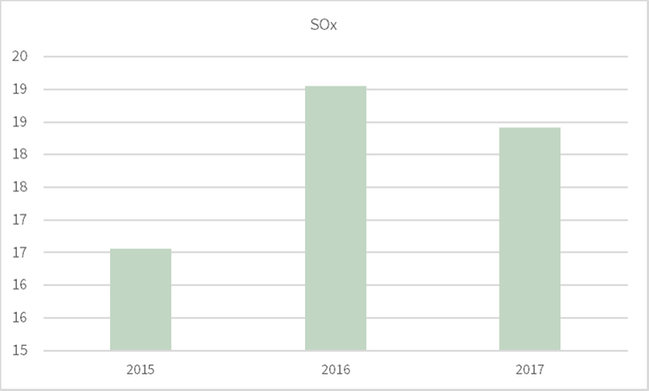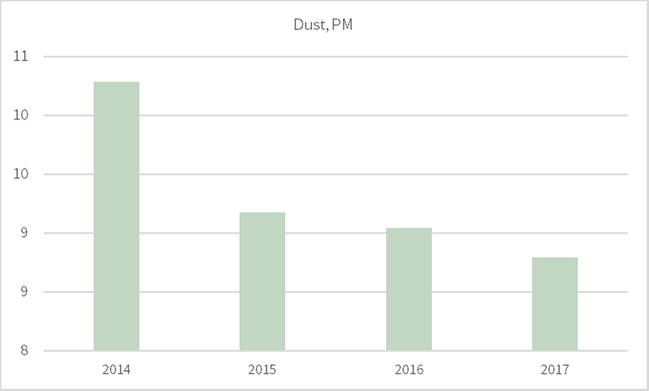GRI-Appendix
305 Emissions
103 - Generic Disclosures on Management Approach
NIBE atmospheric emissions consist of GHG, NOx, SOx and VOC.
Besides generating GHG emissions from energy use, we also use refrigerants in our products and our own installations, which generate some diffuse emissions of refrigerants to the atmosphere.
Transportation is an area where we are developing the reporting of GHG emissions. Today we can track and report the GHG emissions from our own vehicles. We are beginning to get data for purchased transportation and business travel but do not have enough accurate data to be able to report it yet.
Depending on the type of production process, other types of emissions can be more or less material, but since some of the companies have atmospheric emissions as a significant environmental topic, we regard it as important for the whole NIBE Group and something that we should work to minimize.
NIBE has an indirect target to reduce our GHG emission intensity. The target is expressed in terms of reducing energy use by 30% from 2013 to 2020 less than 10 MWh/MSEK total sales.
NIBE buy GoO:s that cover all purchased electricity, which means that it is generated from renewable sources. We have a target to phase out all fossil oil burning from our own facilities.
Our reported carbon emissions are calculated based on GHG protocol emission factors.
305-1 - Direct GHG emissions (Scope 1)
In 2017, carbon dioxide emissions from energy use in our own production plants generated 90 (88) percent of our total GHG emissions, or 16,900 (12,100) tons.
The total emissions from diesel and petrol amount to 5,300 (5,800) tons, an decrease of 500 tons on the previous year. Our ambition is to gradually switch to vehicles fueled by renewable energy.
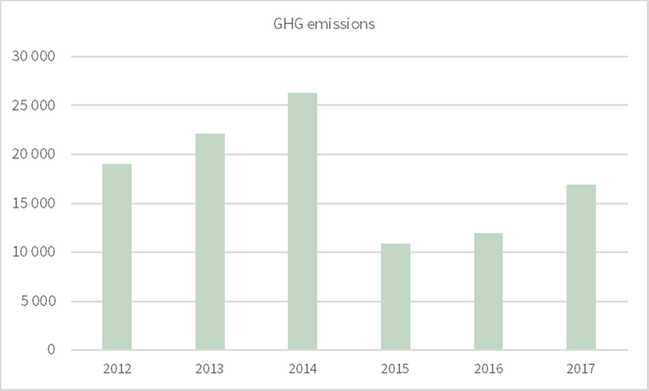
305-2 - Indirect GHG emissions (Scope 2)
Purchased electricity is to 100 percent covered by GoO:s. Purchased heat and cooling amounted to 1614 tons.
305-3 - Other indirect GHG-emissions (Scope 3)
The reported GHG emissions from business travel was 2,102 tons. 24 companies out of 90 has been able to report GHG emissions from business travels (27%).
The reported GHG emissions from purchased transportation for incoming goods was 7,371 tons and from purchased transportation for outgoing goods was 17,819 tons.
305-4 - GHG emissions intensity
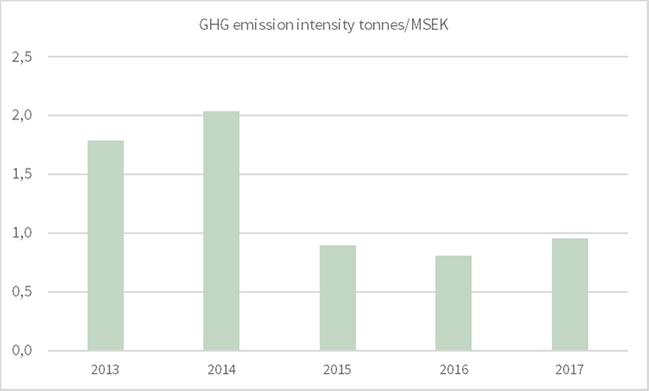
305-5 - Reduction of GHG emissions
The foremost reduction is due to the purchasing of green electricity certificates with guarantee of renewable origin.
305-6 - Emissions of ozone-depleting substances
Not reported.
305-7 - NOx, SOx and other significant air emissions
Not all operations have measurable air emissions, but all report what they measure. For NOx and SOx no data was available for 2014.
